September 25th, 2015 ~ by admin
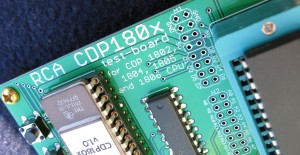
CDP180x Test Board
The CPU Shack’s list of test boards continues to grow. Today we now have available a board for testing RCA COSMAC processors including the CDP1802 1804 1805 and 1806. These early CMOS processors are still being made 40 years after their introduction in 1975. Being a CMOS design, the boards are a bit simpler to make (simpler power supplies) and thus a bit less expensive. They are in stock and shipping now for $89.95.
You can Order them on the RCA180x Test Board page.
Also available are new expansion boards for the MCS-80 boards. In addition to the Zilog Z80 and Intel 8085 expansions, an expansion is now available for the National Semiconductor NSC800. Introduced in 1979 this CMOS processor is a hybrid of the Z80 and i8085, taking features of both to greatly enhance the Z80 architecture.
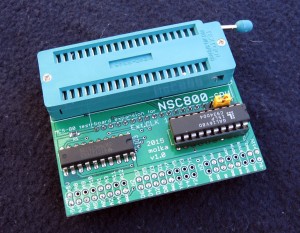
NSC800 Expansion Board
These expansions are available at the same price as the previous ones, $29.95 with FREE Shipping. They can be ordered from the MCS-80 Expansion page.
September 6th, 2015 ~ by admin
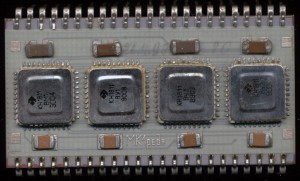
Soviet Electronika MK1red3 – F-11 Clone and implementation of PDP-11
The DEC F-11 ‘Fonz’ implementation of the PDP-11 was released in 1979 and was DEC’s second ‘LSI’ implementation of the PDP. Like its predecessor it was a multi-chip implementation, consisting at its root of a data chip (DC302) and 1-9 control chips (DC303). The DC303 control chips were essentially a large ROM/PLA with a few extra features added for interrupts and sequencing. They formed the microcoded instruction set that drove the 16-bit ALU and registers of the DC302. This is why more then one were supported. Expanding the instruction set was as ‘simple’ as adding more DC303 chips with these instructions encoded. The basic LSI11/23 came with one 303 and one 302. A second IC could be added to support floating point, which included a pair of DC303 chips implementing the floating point instructions. A MMU (DC304) was also supported, and required when using the FP option.
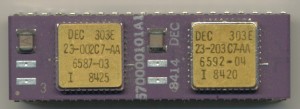
DEC 570000101A1 F11 Floating Point Option with 2x 303E Control chips
The Soviets also widely adopted the PDP-11 architecture. Likely because it was designed to be rather hardware independent. It could be implemented in many different ways, which meant the Soviets could adopt/implement it on their own. Electronika was part of the Soviet industrial complex in Voronezh, Russia making many different IC’s, but also was tasked with making consumer devices (computers and calculators etc, that were in very short supply. The Electronika 60 was one of the first PDP-11 computers they made, and it implemented a copy of the DEC Fonz processor. Electronika combined the standard chipset, and FPU onto a single large MCM with all 4 IC’s (the MMU remained separate) called the MK1 red1 (and later the MK1 red3)
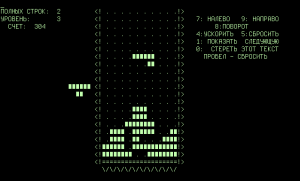
Tetris Electronika 60 – Text Only
KH1811VM1 = DC302 – 21-15541 Data Chip (16-bit ALU etc)
KH1811VU1 = DC303 – 23-001C7 standard instruction set
KH1811VU2 = DC303 – 23-002C7 FP instruction set Part 1
KH1811VU3 = DC303 – 23-003C7 FP instruction set Part 2
It was on this chipset, on a Soviet Electronika 60 that Alexey Pajitnov wrote the very first version of the still famous game of Tetris back in 1984. A game that was very popular, and very widely copied in the West, even to this day. (the copying of technology most certainly went both ways)






